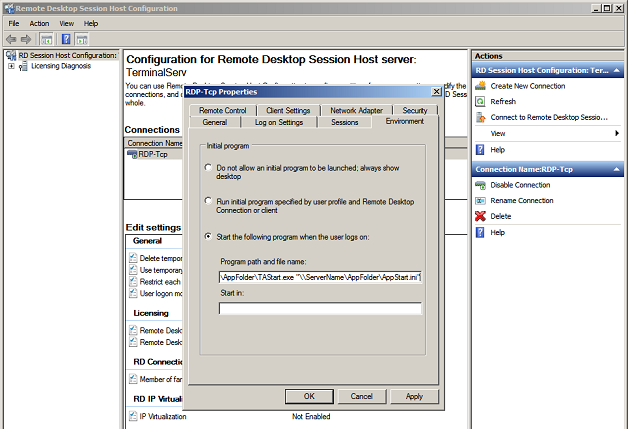Provides an overview of Remote Desktop Services. In this article. Remote Desktop Services (RDS) is the platform of choice for building virtualization solutions for every end customer need, including delivering individual virtualized applications, providing secure. HKEYLOCALMACHINESOFTWAREPoliciesMicrosoftWindows NTTerminal Services SelectTransport. Select network detection on the server. HKEYLOCALMACHINESOFTWAREPoliciesMicrosoftWindows NTTerminal Services SelectNetworkDetect. Enable RemoteFX encoding for RemoteFX clients designed for Windows Server. Why use Windows Terminal Server? That is a good question and I hopeful answer this, if not please comment below:)What is a terminal server – A terminal ser. “The Windows Terminal Services facility offers graphical desktop sessions to remote clients. Terminal Services enables users to work in a windows session that exists on the server. The client functionality is basically reduced to the functionality of a terminal, all it does is display the session screen, and collect user input.

A Terminal Server virtualizes an actual Windows desktop environment experience using a Remote Desktop Protocol (RDP) session created for each user that connects to it. Concurrent connections (depending upon the number of CALS you have) are possible. A Terminal Server authenticates the user connections against the Active Directly list of users of groups that are maintained by your domain controller. The Terminal Server can be setup with a publicly assessable IP address or it can be configured using a private IP address (obtained from a DHCP host) in order to enable your end users with the ability to connect with their VPN (Virtual Private Network) connections. In either case, it is always best to ensure that your Terminal Server is properly protected within the confines of a network firewall.
With Terminal Server, a user can experience running a desktop over the internet with the Windows Remote Desktop Connection feature. They do not need to install any programs on their machine and none of the data streams across the internet. Only screen refreshes are sent over the Internet so it feels like you're running the application locally but it's all happening on the server. Printing also occurs locally, so a user can run an application over Terminal Server and have it print reports on their local printer.
Application Must be Multiuser Compatible
Since multiple users are running your program on the same machine, your application needs to be multiuser friendly to avoid conflicts between users.

For instance, it should store any temporary files in the user (profile) based location, update registry entries in the HKEY_CURRENT_USER (not HKEY_LOCAL_MACHINE) section, etc.
Microsoft Access and Terminal Server
Terminal Server is particularly powerful for database applications such as Microsoft Access since you don't need to worry about installing Microsoft Access on each user's machine, making sure the right version of Access is loaded, whether the latest front-end database application is deployed, and the need to send large amounts of data over the Internet for Access to process. It's all being done on the Terminal Server machine with the local network bandwidth, and only the screen is refreshed as it changes.
For multi-user and scalable support, your Microsoft Access application should be a split database design where each user has their own copy of the front-end database installed under their profile. For more information on this, visit Splitting Microsoft Access Databases to Improve Performance and Simplify Maintainability. Our Total Access Startup program can also help with deployment for each user to ensure they have the latest copy of your front-end database.

Terminal Services Configuration
Additionally, to support a Microsoft Access application, you can use install the free runtime version of Access, so you don't need to purchase an additional Office/Access license for each user.
